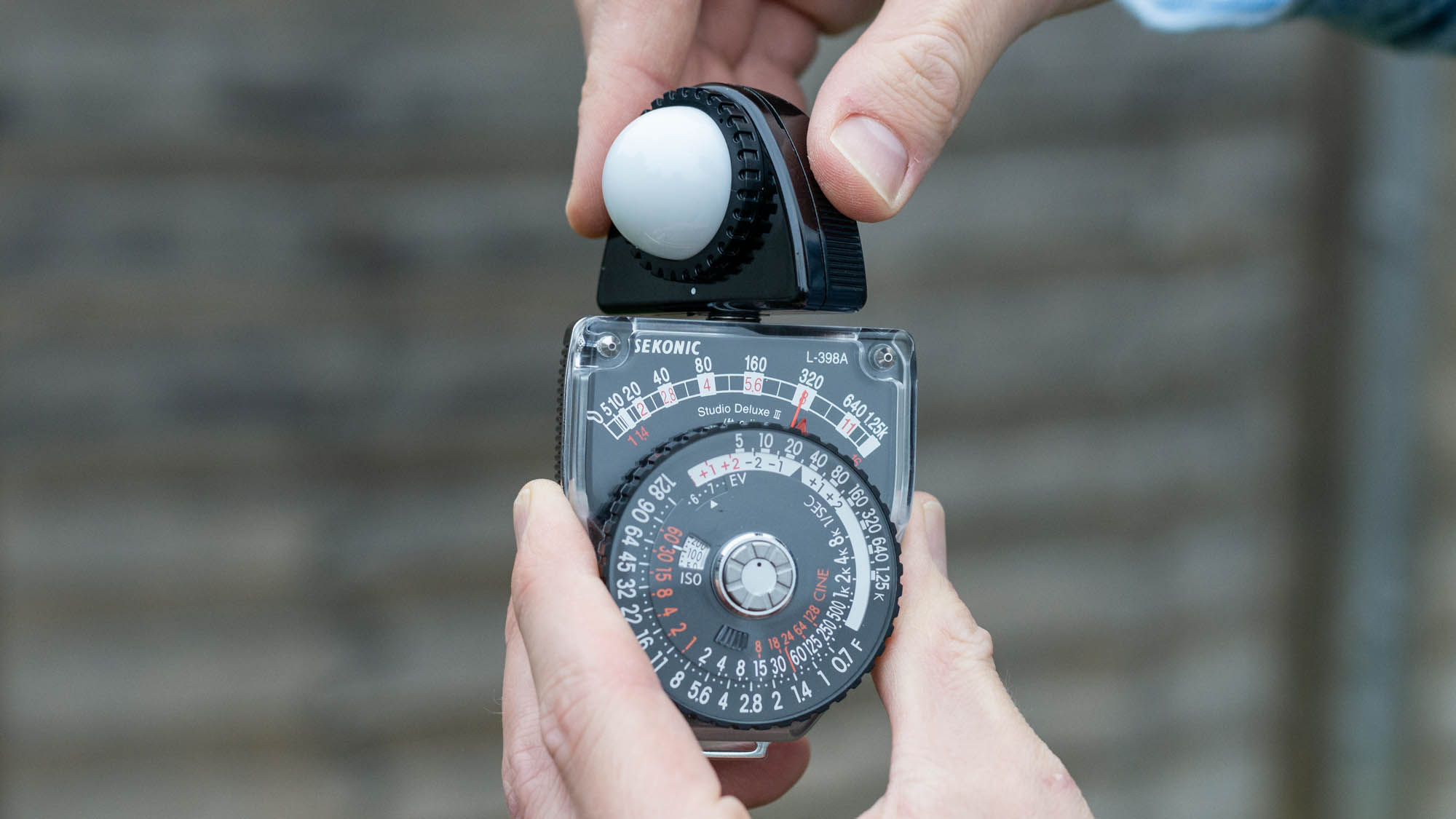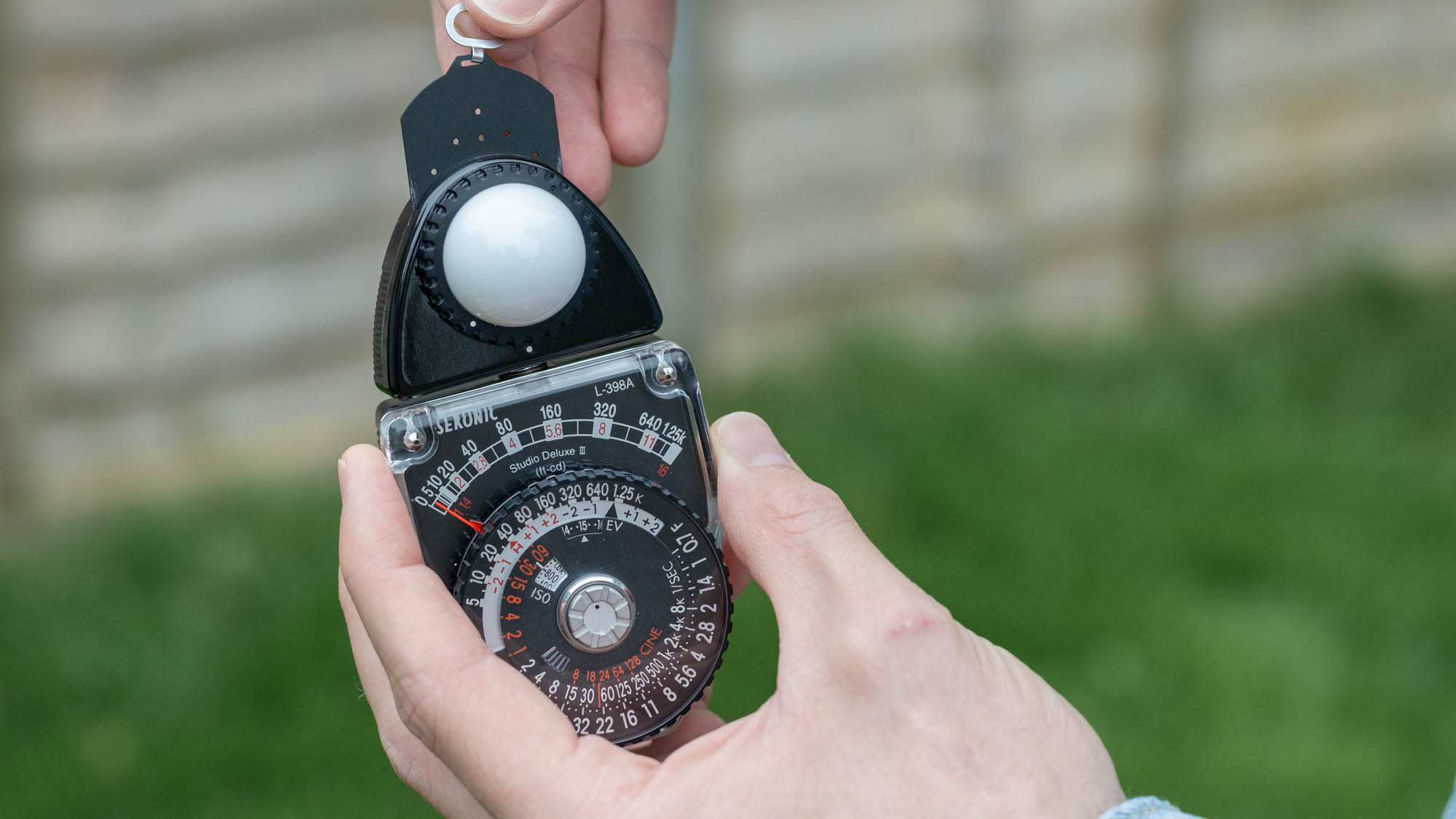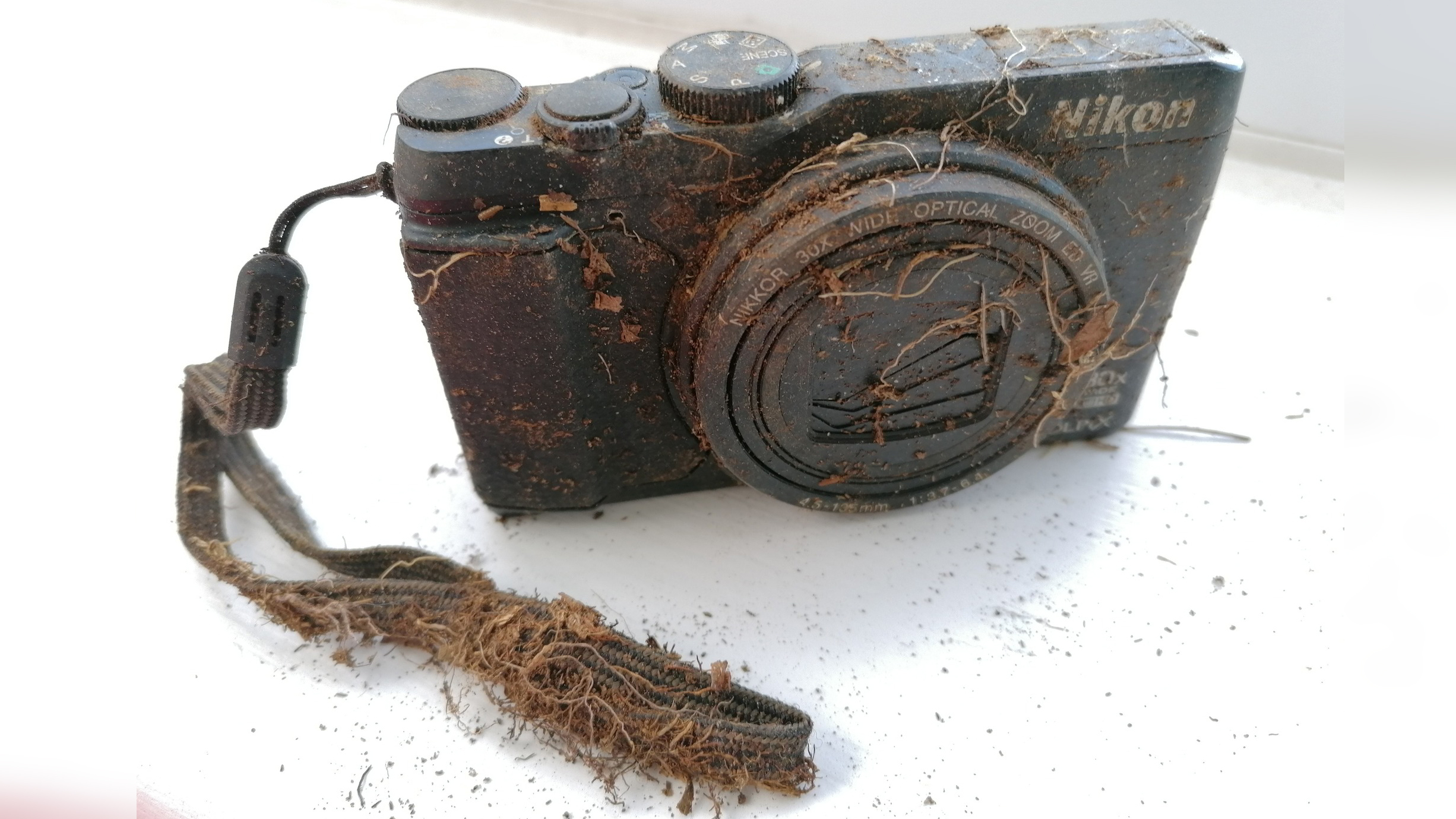Digital Camera World Verdict
Sekonic Studio Deluxe III L-398A really is a celebration of Sekonic’s heritage. It’s an unapologetically retro light meter for photographers who relish the process of image making as much as they enjoy the end product. Despite its retro charm, the Studio Deluxe boasts features that will please photographers and videographers. It feels like a premium camera accessory, too.
Pros
- +
Retro cool
- +
No battery required
- +
Lovely build quality
- +
Needle lock
- +
Swivelling head
- +
Video and constant lighting features
Cons
- -
Not the best choice for low-lighting
- -
Retro design can prove a bit fiddly
- -
Busy dials can seem intimidating for newcomers
Why you can trust Digital Camera World
It doesn't matter whether you own one of the best mirrorless cameras on the market right now. The best light meters will provide more accurate and consistent results than your camera's built-in light meter. And the Sekonic Studio Deluxe III light meter stands out for having a passive solar cell, which means you’ll never have to worry about changing batteries.
So why are light meters so accurate? Well, most cameras only take readings from light that is reflected off the subject. Several variables can impact this reading including the subject’s reflectiveness and the focal length being used. Camera meters are also designed to provide an ‘average’ exposure to prevent clipping, so they will quell bright highlights and lift dark shadows in an attempt to realize tones as middle gray.
Handheld light meters such as the Sekonic Studio Deluxe III can measure reflected light, but they are predominantly used to measure incident light. This is the amount of light that falls onto the subject, meaning your reading won't be affected by your subject's color, texture or reflectiveness.
The Sekonic Studio Deluxe III stands out as a throwback to Sekonic's impressive heritage – it's not too dissimilar from the light meters it was making in the 1950s. Standout features include a swiveling head, needle lock and more. The question is, how effective is it and how easy is it to use?

Sekonic Studio Deluxe III L-398A light meter: Specifications
| Reflected metering | Yes |
| Incident metering | Yes |
| Flash | No |
| Angle of view | 30 degrees |
| EV range | EV1-20 |
| Shutter speed range | 60-1/8000sec |
| Aperture range | f/0.7-128 |
| ISO range | ISO6-12,000 |
| LCD display | No |
| Battery | None |
| Dimensions | 4.4x2.3x1.3in / 112x58x34mm |
| Weight | 0.4lbs / 190g |
Sekonic Studio Deluxe III L-398A light meter: Price
The Sekonic Studio Deluxe III is priced at $239 / £234.95 , making it virtually on par with the Sekonic Flashmate L-308X Light Meter ($239 / £243.95). It's considerably more expensive than Sekonic's entry-level offering – the Sekonic Twinmate L-208 ($139 / £134.95) – but boasts a much more substantial build and more advanced features.
Ultimately, this is a robust, serious enthusiast / pro-grade light meter for photographers who don't require flash metering. And its retro charm makes it a stylish accessory for vintage film photographers.
Sekonic Studio Deluxe III L-398A light meter: Design & Handling
Inside the box, you'll find the Sekonic Studio Deluxe III L-398A light meter, a leatherette pouch, strap, lumisphere, lumidisc, lumigrid and high slide. The light uses an amorphous photosensor to measure light, which negates the need for a battery. I think this is one of the Sekonic Studio Deluxe III's biggest selling points. Especially if you're going to be using it infrequently. You can simply slot it into your kit bag and use it as and when needed without fear of finding a dead battery.
The Sekonic Studio Deluxe III L-398A isn't particularly large, but it's deceptively weighty (0.4lbs / 190g). It feels slightly heavier than my iPhone 13, so you'll definitely notice it's there if you slip it into your pocket. And if you don't want to keep it in your pocket, but want easy access to the device, the included pouch features a handy belt loop.


The Sekonic Studio Deluxe III L-398A looks like a retro light meter, making it a great companion for film photographers or those with a retro mirrorless such as the Nikon Zf or Fujifilm X-T5. Its hefty weight feels reassuring in the hand and its build quality is a huge improvement over the plasticky Sekonic Twinmate L-208. Not only does it feel robust, but the dials spin smoothly and accurately.
Few controls make the Studio Deluxe III relatively simple to control. You have an outer dial with a scale marker, an inner dial to set the shutter speed and a center dial to set the ISO. The former two dials rotate smoothly, while the ISO dial feeds back with a reassuring click as it spins. In the center of the dials is a film sensitivity selector knob. When spun counter-clockwise, it pops up and when spun clockwise, it locks in a flush position.



Where the Sekonic Studio Deluxe III L-398A proves a little more fiddly than other light meters such as the Sekonic Twinmate L-208 is its removable lumisphere, lumidisc and lumigrid. These are required to take incident light readings; illumination contrast adjustments and illuminance measurements; and reflected light measurements respectively. These plastic implements are swapped in and out via a bayonet mounting mechanism.
The Sekonic Studio Deluxe III L-398A is not flash compatible, so contrast measurements will only be useful for filmmakers lighting subjects for, say, interviews or photographers lighting subjects with constant lighting. This measurement allows you to work out the contrast ratio between a key light and fill light.
It would be extremely easy to misplace these implements, so it's nice to see that the leatherette pouch has provision for the light meter and an attached measurement accessory, with the other two slipped into an internal pouch, so everything can be stored together. It's also worth noting that individual replacement lumispheres, lumidiscs and lumigrids are available for purchase, should the worst happen.
The Studio Deluxe III also comes with a 'High' slide, which reduces the amount of light that hits the meter's photocell, allowing the light meter to measure light in very bright conditions. The high slide slips into a slot behind the lumisphere, but you'll also find provision for the accessory on the back of the light meter when it's not in use.



Sekonic Studio Deluxe III L-398A light meter: Performance
I've seen suggestions that the Studio Deluxe III doesn't perform as well in low light due to its passive solar cell requiring light for power. I did find it had a tendency to slightly overexpose images when shooting still life, but only when using incident metering – reflective metering in this situation was still accurate.
But if you intend to shoot in low light often, it probably makes sense to pick up a flash-compatible light meter like the Sekonic Flashmate L-308X, anyway. Part of the Studio Deluxe III’s charm is its archaic design that you can trace back to the 1950s. It isn’t for everyone. But it's an extremely fun light meter to use and accurate in normal lighting conditions. You also have the option to use the high slide if you're shooting in very bright conditions.
Incident light readings are taken from the subject with the lumisphere pointed at the camera and reflected readings are taken from the camera, with the lumigrid pointed at the subject. To take a meter reading you begin by pushing down and swiveling the silver center button until it pops up (if it's in the locked position). You then set the ISO by swiveling the clicky center dial.
You need to press and hold the silver button to activate the light meter's needle. It's crucial that you wait until the needle rests before releasing the button as this will stop the needle. I found myself perplexed as to a few odd metering readings before realizing I was only tapping the button. Ultimately, this is something you'll get used to but could prove problematic if you only use the device sparingly and forget.
That said, it is a plus point because it locks the needle in place, meaning it won't return to a default position after 15 seconds (like the Sekonic Twinmate L-208). So you can take as much time as you need to dial in your settings. I did notice that if you shake the Studio Deluxe III (which I do not recommend) the needle can move permanently (until you take another reading).
The top number where the needle rests is measured in foot candles (one foot-candle is approximately 10 lux). To decipher your reading you need to rotate the outer dial until the small red pointer meets the red needle. You then turn the inner dial so the foot-candle value rests on the black pointer. This will then allow you to read the selection of aperture and shutter speed combinations, as well as deliver an EV value. It's worth noting that the Studio Deluxe III has a smaller EV range than many other light meters (4-17EV at ISO100).


While the majority of Digital Camera World readers – myself included – are unlikely to use the Sekonic Studio Deluxe III L-398A in conjunction with a cinema camera, it’s worth noting that the figures next to the word ‘CINE’ represent framerates and can be used alongside the corresponding f-number to work out the correct aperture for the framerate in question (taking a reading is still performed in the same way).
A simple feature that’s really handy is the ability to swivel the head of the light meter to point in your preferred direction. This means you can meter with the element pointing away from you and still read the information on the dial.
I used the Sekonic Studio Deluxe III L-398A to meter the same constant lighting setup I used with the Sekonic Twinmate L-208 and it produced very accurate results via reflective metering but produced a brighter exposure when using incident metering (possibly due to the passive solar cell, mentioned earlier). Incident readings are extremely useful in still life/product photography settings because they aren’t affected by color and reflectiveness.
However, upon taking the light meter outside I found the incident reading to be very accurate – as evidenced by the portrait image in the gallery (below). The autumnal image was taken using reflective metering on a dull day and in dark-ish lighting conditions within an avenue of trees. As you can see, the Sekonic Studio Deluxe III L-398A's reflective metering produced a good exposure once again. However, it's important to remember that reflective metering is essentially spot metering so it will provide different exposure readings depending on what you direct the light meter towards.
So long as you're not looking for an incident meter to work specifically in low-light conditions, you can expect the Sekonic Studio Deluxe III to deliver accurate readings. It can be a little fiddly and time-consuming to switch light-reading accessories. But that's also part of the retro charm.


Sekonic Studio Deluxe III L-398A light meter: Verdict
The Sekonic Studio Deluxe III L-398A isn’t for everyone. It’s an unapologetically retro device that’s surprisingly weighty and requires swapping between a lumisphere and lumigrid to perform incident and reflective readings, respectively. But, it doesn’t require a battery, its build has a premium feel and in the right lighting conditions, it performs very well.
If you don’t require flash compatibility, are looking for an authentic retro light meter, love the idea of a batteryless device or are somebody who will use the cinema settings and/or measure illuminance or contrast, then the Studio Deluxe III is a great choice. For everyone else, I’d recommend picking up the very capable, yet much easier to use Sekonic Twinmate L-208.
| Features | Measure reflective and incident lighting, contrast and illuminance. Calculate apertures for specific framerates | ★★★★★ |
| Design | It's a light meter classic with a sturdy, premium feel | ★★★★☆ |
| Performance | Maybe not the best in low-light conditions, but otherwise very accurate | ★★★★☆ |
| Value | Within the more capable Sekonic Flashmate L-308X-U’s price range, but it’s still feature rich and the build quality is top notch | ★★★★☆ |

✅ Buy this if...
- You want an authentically retro light meter to accompany your film camera.
- You're a videographer who wants an analog light meter.
🚫 Don't buy this if...
- You require a light meter that can measure strobe lighting.
- A light meter that's small, light and easy to use is your top priority.
Alternatives
Sekonic L-208 Twinmate
Sekonic's entry-level light meter has few controls and a simple interface, making it a fantastic everyday light meter. Its retro looks make it a fine film photography companion and it's so small and light, you won't know it's in your back pocket.

Mike is Digital Camera World's How To Editor. He has over a decade of experience, writing for some of the biggest specialist publications including Digital Camera, Digital Photographer and PhotoPlus: The Canon Magazine. Prior to DCW, Mike was Deputy Editor of N-Photo: The Nikon Magazine and Production Editor at Wex Photo Video, where he sharpened his skills in both the stills and videography spheres. While he's an avid motorsport photographer, his skills extend to every genre of photography – making him one of Digital Camera World's top tutors for techniques on cameras, lenses, tripods, filters and other imaging equipment – as well as sharing his expertise on shooting everything from portraits and landscapes to abstracts and architecture to wildlife and, yes, fast things going around race tracks...


